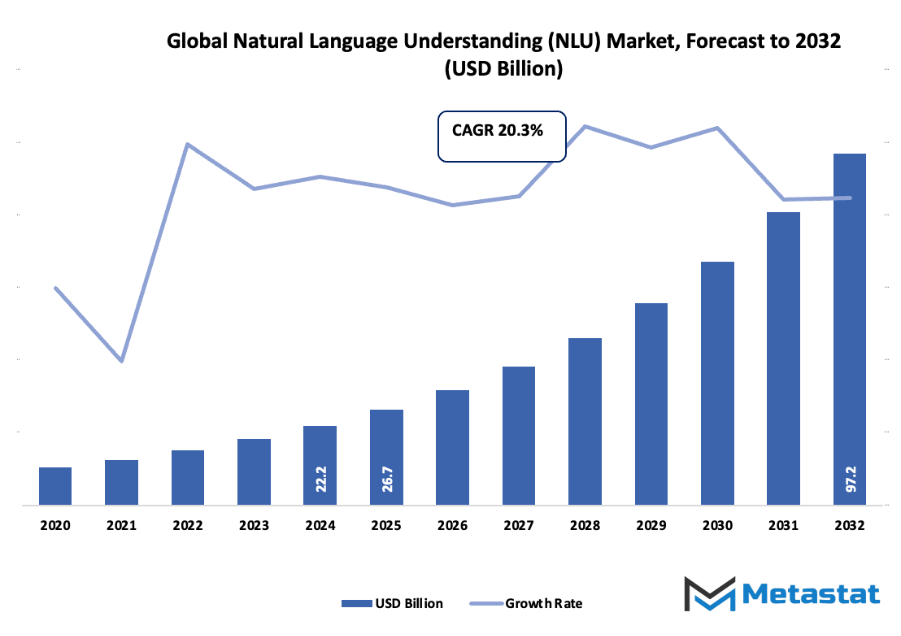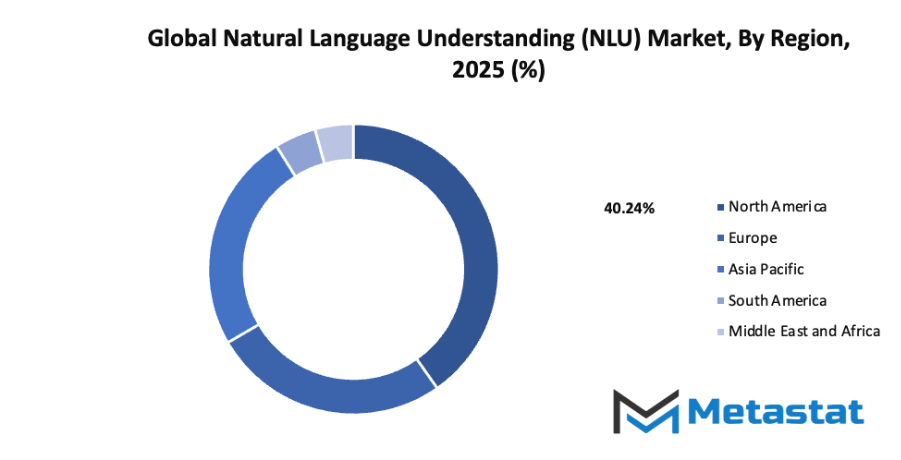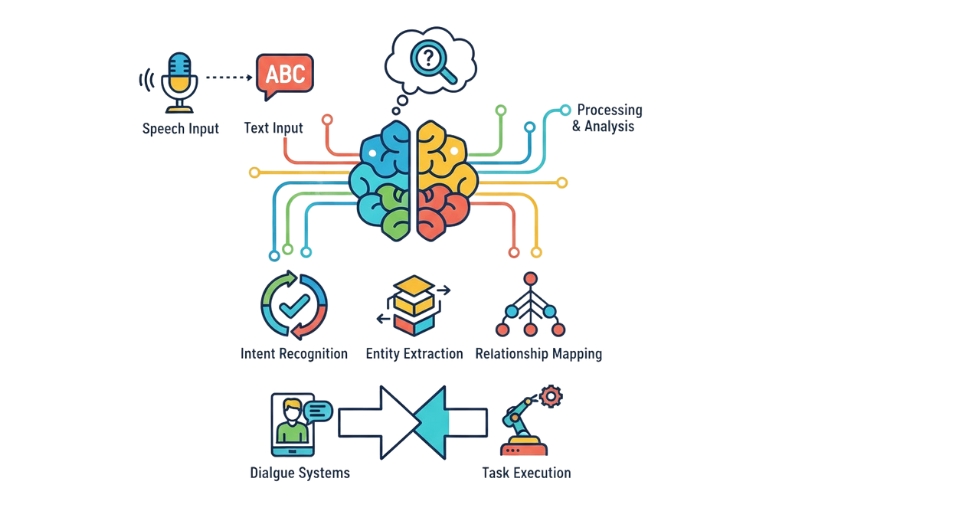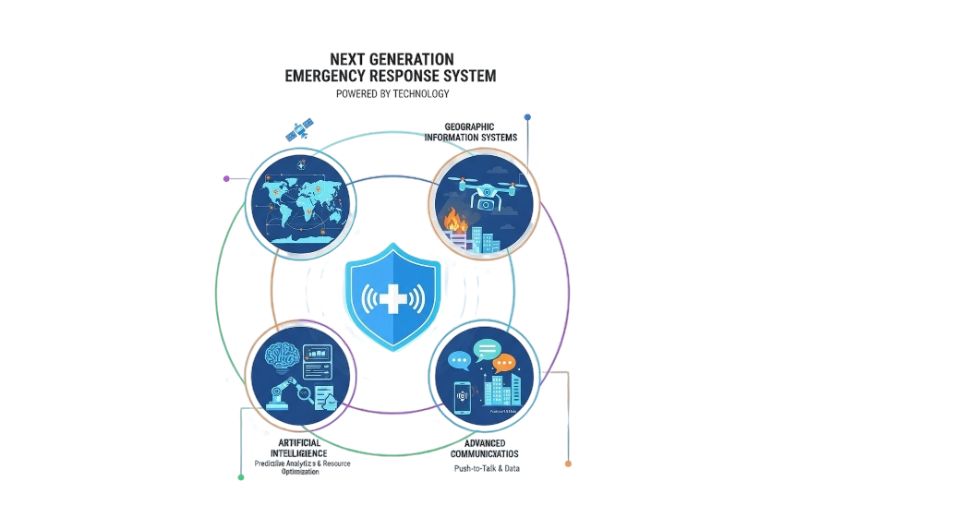Global Natural Language Understanding (NLU) Market - Comprehensive Data-Driven Market Analysis & Strategic Outlook
The global natural language understanding (NLU) market as well as the related industry are born from a clear vision that was encouraged by the mid-20th-century computer science laboratories; that was when researchers made the first attempts to teach the machines how to figure out the human language. In those primitive times of experimenting, computers were only able to obey inflexible commands and had a limited vocabulary to give feedback. The idea of machines capturing the meaning, the tone, and the context was something that sounded very far away and almost unreal. The very beginning was slow but, nevertheless, it managed to kindle the interest of universities, researchers, and even the new tech giants.
- The global natural language understanding (NLU) market is at the value of around USD 26.7 Billion in 2025, with the rise of about 20.3% CAGR till 2032 which has the possibility to surpass USD 97.2 Billion.
- Rule-Based approximately hold 16.8% of the market share and they are the ones entirely promoting innovation and extending the applications to various areas by means of very thorough research.
- The major trends that are boosting the growth are: the faster and wider use of AI-based virtual assistants and chatbots, and the growing need for better customer service through auto.
- The integration of NLU with generative AI for the development of advanced conversational intelligence is one of the main opportunities.
- The main point: Over the next ten years, the market is going to receive a huge increase in value, which would mean that it is a good point for future investments.

The considerable turning point was that governments and academic institutions began to fund language-oriented projects. In the 1980s and 1990s, machine learning provided the basis for the development of language technology. Developers no longer fed machines with pre-written definitions but started training models with the help of examples, allowing computers to discover the patterns behind the data. This change made it possible for the technology to advance from mere keyword matching to the understanding of the intention behind the words spoken.
Consumer expectations were the primary drivers of progress and changed the direction of development. Email filters, digital assistants, and primitive chatbots were the main forces behind the companies' improving natural conversation interpretation. When smartphones became a part of the people's lives, the expectation of the machines being able to interpret messages, voice notes, and search queries accurately was raised. The increased volume of data turned out to be quite beneficial for the developers who could train the systems more effectively and the technology, healthcare, finance, and retail companies were the ones who explored the practical uses. The technology progressed very rapidly from research labs to real-world systems, such as customer service automation, assistive tools for individuals with certain disabilities, and cross-language communication platforms.
The open-source developer community was a significant factor in pushing the momentum forward. The availability of easy-to-use language models and communal datasets greatly cut the time required for development. The regulatory discussions, to some degree, influenced the industry as well. The governments, for instance, began to question how language data should be collected, stored, and utilized. The ethical standards concerning privacy were such that they encouraged the businesses to build up their systems handling sensitive information with due care.
Market Segments
The global natural language understanding (NLU) market is mainly classified based on Type, Application, End-use.
By Type is further segmented into:
- Rule-Based: The approach of rule-based NLU relies on the structured linguistic rules that experts have developed. The interpretation of language is supported by the clear guidance provided by the predefined rules. This yields predictable outcomes, which in turn makes it easier to modify the model to meet specific needs. The rule-based structure is an advantage for organizations looking for accuracy and control, especially in cases where language processing must be very reliable and repeatable without constant statistical learning adjustments.
- Statistical: The pattern recognition built from the collected text or speech samples drives the operation of statistical NLU. Besides that, it is supported by the mathematical evaluation, which means that the decision-making is based on the likelihood rather than on the fixed rules. This method can manage various language cases and unknown or rare expressions. The increased flexibility invites a more profound comprehension of natural communication styles, particularly when there are large sets of data available for learning and refining.
- Hybrid: Hybrid NLU is the combination of structured linguistic rules and statistical pattern recognition. This partnership aids in the overcoming of the disadvantages that come with relying on a single approach. The rule guidance provides the precision, while the statistical learning offers the flexibility. Reliability and flexibility are the dual benefits gained by the organizations that opt for this method, thus allowing them to build better interpretation capabilities across the changing language formats and communication styles.
By Application the market is divided into:
- Chatbots & Virtual Assistants: Chatbots and virtual assistants rely on language understanding to process user requests and deliver accurate responses. Faster support and reduced waiting time strengthen customer service. Continuous learning from conversations raises response quality. Businesses adopt these solutions to lower operational strain, direct customers to correct information, and reduce dependence on manual support.
- Sentiment Analysis: Sentiment analysis measures emotional tone in text, allowing brands to understand public attitude toward services, decisions, or announcements. The method transforms written comments into meaningful signals that reveal satisfaction, frustration, or enthusiasm. Data from sentiment analysis assists with strategy improvements and supports clearer decisions about messaging and customer relations.
- Text Analysis: Text analysis breaks down language into meaningful groups, helping organizations identify relevant themes and concepts within large volumes of text. Faster information sorting reduces manual review. Automated structure detection helps locate key content while reducing the chance of missing important details. Better clarity supports planning, reporting, and knowledge management.
- Customer Experience Management (CXM): Customer Experience Management uses language interpretation to examine feedback and improve service quality. Collecting comments from many channels supports consistent understanding of customer expectations. Actionable insights encourage improvement of services, processes, and communication style. Organizations benefit through stronger customer trust and long-term engagement.
- Data Capture: Data capture through language interpretation helps convert free-form text or spoken communication into organized data. Automated extraction reduces errors from manual entry. Faster classification improves operational speed and supports better data access. Companies benefit from consistent record keeping and lower administrative workload.
- Others: Other uses include compliance tracking, translation support, and task automation. Language interpretation assists with filtering messages, summarizing material, and highlighting relevant information. Reduced manual effort encourages employees to focus on higher-value tasks. Organizations gain stronger productivity and improved clarity when managing language-driven workflows.
By End-use the market is further divided into:
- Retail & E-commerce: Retail and e-commerce adopt language interpretation for better product searches, customer support, and review assessment. Understanding shopper language encourages accurate suggestions and faster resolution of questions. Automated support strengthens satisfaction and reduces abandoned purchases. Brands benefit through improved conversions and increased trust from shoppers.
- Healthcare & Life Sciences: Healthcare and life sciences apply language interpretation to analyze notes, records, and patient feedback. Faster document review reduces delays and supports clearer decision pathways. Automated extraction supports better handling of medical terminology. Stronger organization of medical communication supports compliance and patient care planning.
- BFSI: Banking, financial services, and insurance organizations use language interpretation to screen forms, analyze feedback, and support fraud detection. Automated handling of queries reduces support queues. Faster sorting of customer requests raises service speed. Clear recognition of language patterns contributes to safer and more efficient transaction handling.
- IT & Telecommunications: IT and telecommunications use language interpretation to power support centers, handle service inquiries, and automate ticket routing. Automated language processing reduces response time for technical questions. Prioritization of urgent concerns becomes faster, supporting stronger satisfaction and higher efficiency within large service environments.
- Media & Entertainment: Media and entertainment fields use language interpretation to track audience responses and analyze content performance. Faster review of opinions supports planning for new material. Language analysis also helps understand cultural trends and audience interest, guiding production strategies and communication plans.
- Others: Additional users include public services, education, logistics, and manufacturing. Language interpretation assists with report sorting, monitoring messages, and guiding automated workflows. Reduced manual review supports better time management and improved accuracy across daily operations.
|
Forecast Period |
2025-2032 |
|
Market Size in 2025 |
$26.7 Billion |
|
Market Size by 2032 |
$97.2 Billion |
|
Growth Rate from 2025 to 2032 |
20.3% |
|
Base Year |
2024 |
|
Regions Covered |
North America, Europe, Asia-Pacific, South America, Middle East & Africa |
By Region:
- Based on geography, the global natural language understanding (NLU) market is divided into North America, Europe, Asia-Pacific, South America, and the Middle East & Africa.
- North America is further divided into the U.S., Canada, and Mexico, whereas Europe consists of the UK, Germany, France, Italy, and the Rest of Europe.
- Asia-Pacific is segmented into India, China, Japan, South Korea, and the Rest of Asia-Pacific.
- The South America region includes Brazil, Argentina, and the Rest of South America, while the Middle East & Africa is categorized into GCC Countries, Egypt, South Africa, and the Rest of the Middle East & Africa.

Growth Drivers
- Growing adoption of AI-powered virtual assistants and chatbots:
Rising use of virtual assistants and chatbots encourages faster communication between customers and businesses. Many sectors apply Natural Language Understanding tools to support quick responses and reduce waiting time. Higher demand for smart communication encourages stronger growth for the global natural language understanding (NLU) market, pushing more investment toward advanced language systems and supportive software tools. - Increasing demand for enhanced customer experience through automation:
Automation improves customer satisfaction by offering consistent and accurate support during every interaction. Companies use Natural Language Understanding technology to reduce manual work and give customers faster answers. Stronger focus on smoother service encourages increased spending on language automation tools, allowing more brands to deliver reliable support across multiple contact points without delays.
Challenges and Opportunities
- High complexity in processing diverse languages and dialects:
Many languages contain varied structure, tone, and cultural references. Natural Language Understanding technology must handle wide differences in grammar and meaning without losing accuracy. Language diversity slows progress, as every region requires special tuning and careful testing to maintain reliable understanding during communication across multiple platforms and business functions. - Data privacy and security concerns in language data handling:
Language systems often require sensitive customer information to improve accuracy and automate responses. Protecting stored information demands strong security methods and constant monitoring. Businesses must follow strict rules to avoid misuse and prevent unauthorized access, pushing the need for better safety standards in every language system and related tools.
Opportunities
- Integration of NLU with generative AI for advanced conversational intelligence:
Generative AI combined with Natural Language Understanding enables deeper context awareness and more natural answers from automated communication tools. Strong pairing of both technologies supports smoother conversations and reduces manual work for support teams, helping the global natural language understanding (NLU) market gain stronger value and wider industry acceptance.
Competitive Landscape & Strategic Insights
The global natural language understanding (NLU) market shows constant progress, supported by strong demand for technology that can interpret written or spoken language with meaningful accuracy. Many organizations now invest in advanced language systems to create faster decision-making support and smoother customer communication. The modern business landscape places strong value on tools that help transform complex language into clear direction for automated services, analysis, and knowledge search. Wider adoption of digital platforms encourages more research, leading to steady improvement in language processing methods.
The market includes many powerful participants, creating strong competition. Major global companies such as Google LLC, Microsoft, International Business Machines Corporation, Amazon.com, Inc., SoundHound AI, LivePerson, OpenAI, SAP SE, Nuance Communications, Hugging Face, Inc., Haptik, Expert.ai, Verbio Technologies, Wolfram, Cortical.io, Omilia, Cognigy, and Tisane Labs continue to push the field forward. These organizations offer different strengths, including cloud systems, machine learning models, and software development tools. Such competition encourages constant innovation and helps reduce barriers for smaller regional providers. Smaller providers contribute fresh ideas and new approaches because faster experimentation often happens within younger companies.
Demand for advanced language solutions grows across customer support centers, financial services, healthcare operations, and educational platforms. Automated assistants, language-based insights, and smart data tagging benefit organizations seeking quicker interpretation of large collections of text or audio. Clear language understanding supports stronger decision making, because high-quality interpretation reduces confusion and strengthens accuracy. Many sectors now measure success through faster response time and lower manual effort. Language systems help reach these goals by handling routine inquiries and allowing human teams to focus on more complex work.
Market size is forecast to rise from USD 26.7 Billion in 2025 to over USD 97.2 Billion by 2032. Natural Language Understanding (NLU) will maintain dominance but face growing competition from emerging formats.
Continued development promises broader access to advanced language systems. Growing collaboration between research groups and commercial firms encourages responsible design and transparent communication regarding performance. Helpful language solutions can support smoother communication, reduce workloads, and create stronger connections between digital platforms and human needs. Steady competition, continued innovation, and rising demand guide the future of Natural Language Understanding (NLU) technology.
Report Coverage
This research report categorizes the global natural language understanding (NLU) market based on various segments and regions, forecasts revenue growth, and analyzes trends in each submarket. The report analyses the key growth drivers, opportunities, and challenges influencing the global natural language understanding (NLU) market. Recent market developments and competitive strategies such as expansion, type launch, development, partnership, merger, and acquisition have been included to draw the competitive landscape in the market. The report strategically identifies and profiles the key market players and analyses their core competencies in each sub-segment of the global natural language understanding (NLU) market.
Natural Language Understanding (NLU) Market Key Segments:
By Type
- Rule-Based
- Statistical
- Hybrid
By Application
- Chatbots & Virtual Assistants
- Sentiment Analysis
- Text Analysis
- Customer Experience Management (CXM)
- Data Capture
- Others
By End-use
- Retail & E-commerce
- Healthcare & Life Sciences
- BFSI
- IT & Telecommunications
- Media & Entertainment
- Others
Key Global Natural Language Understanding (NLU) Industry Players
- Google LLC
- Microsoft
- International Business Machines Corporation
- Amazon.com, Inc.
- SoundHound AI
- LivePerson
- OpenAI
- SAP SE
- Nuance Communications
- Hugging Face, Inc.
- Haptik
- Expert.ai
- Verbio Technologies
- Wolfram
- Cortical.io
- Omilia
- Cognigy
- Tisane Labs
WHAT REPORT PROVIDES
- Full in-depth analysis of the parent Industry
- Important changes in market and its dynamics
- Segmentation details of the market
- Former, on-going, and projected market analysis in terms of volume and value
- Assessment of niche industry developments
- Market share analysis
- Key strategies of major players
- Emerging segments and regional growth potential








 US: +1 3023308252
US: +1 3023308252






